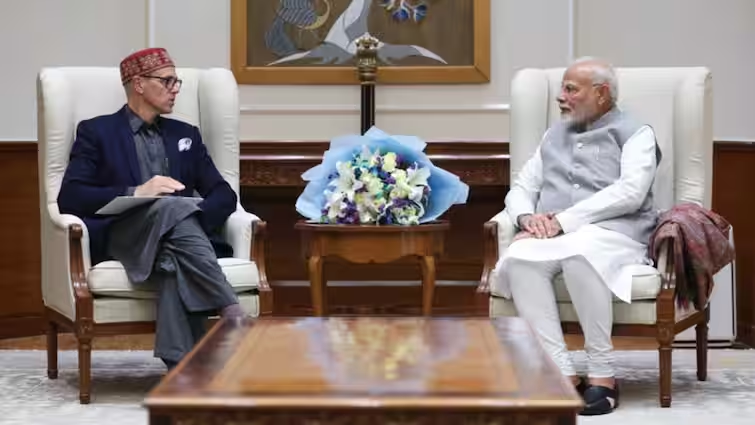EU Launches €20 Billion Tariff Retaliation Against US Amid Rising Global Trade Tensions
As global trade relations grow increasingly tense, the European Union has now joined China in responding to the latest wave of aggressive tariffs introduced by the United States. In what could escalate into one of the most significant transatlantic trade disputes in recent history, the EU has imposed retaliatory tariffs worth over €20 billion on a broad range of American products. This move, largely backed by most EU member states, represents the bloc’s firm response to the protectionist policies adopted by Washington under former President Donald Trump.
EU Responds to US Tariffs with Multibillion-Euro Measures
According to a statement issued by the European Commission, the EU’s governing body for trade and commerce, these countermeasures are being implemented in three phases. The initial set of tariffs is scheduled to take effect by mid-April, followed by a second wave in May, and a final round of duties to be enforced starting December 1.
The affected US goods include politically sensitive exports such as soybeans, poultry, agricultural produce, motorcycles, luxury items, and industrial components. Sources close to the matter indicate that the selection of products was strategic, aimed at applying pressure on states in the US where trade-dependent sectors are vital to local economies—and where political influence is considered strong.
These measures come after the US imposed steep tariffs on European imports, including a 25% duty on steel, aluminum, and automotive products, as well as a 20% levy on a wide range of other items. The European Commission has stated that its response is proportionate and rooted in the principle of fair trade, stressing that the EU had been left with little alternative given the escalating actions taken by the United States.
Politically Targeted Products and Strategic Timing
As reported by Bloomberg, the majority of EU countries agreed that targeting exports from politically sensitive regions of the US would be the most effective strategy to get Washington’s attention. These goods include soybeans grown in Louisiana and agricultural items from the Midwest, along with consumer and luxury products such as motorcycles and beauty care items.
The European response is designed not only to economically counteract the effects of US tariffs but also to create domestic political repercussions for American lawmakers representing those states. Observers suggest that by focusing on goods from influential regions, the EU aims to pressure Washington through internal channels to reconsider its protectionist trade policies.
Potential for Reversal Amid Ongoing Negotiations
Despite the firm response, EU officials have left the door open for dialogue and reconciliation. A spokesperson for the European Commission stated that the countermeasures are reversible, contingent upon the United States engaging in meaningful discussions toward a “mutually beneficial and balanced trade resolution.”
This condition reflects a broader EU strategy that seeks negotiation rather than long-term confrontation. Officials hope that diplomatic engagement can still bring about a resolution before the dispute leads to sustained economic damage on both sides of the Atlantic.
However, tensions remain high as former President Trump, who has retained significant influence in Republican politics and is expected to run again, has announced plans to further increase tariffs on foreign imports if reelected. His proposed policies include new duties on lumber, semiconductor components, pharmaceutical products, and other goods—potentially affecting an additional €380 billion in EU exports to the US.
A Growing Global Trade Confrontation
The European Union’s response follows shortly after China’s announcement of its own countermeasures against the US. Beijing has escalated its trade retaliation by increasing tariffs on American goods, raising duties from 34% to a staggering 84% on select products. The Chinese Ministry of Finance also announced that these additional tariffs would come into force from April 10.
In parallel, the Chinese Ministry of Commerce added 12 American organizations to its export control list, which includes restrictions on businesses deemed to endanger China’s national security or violate economic sovereignty. Six of these entities were also designated on the country’s “unreliable entities list,” a move intended to hinder their ability to operate freely in the Chinese market.
Following these announcements, US stock index futures reportedly experienced a noticeable decline, reflecting investor concerns over the growing trade rift and its potential impact on corporate profits and global supply chains.
Trade War 2.0? Comparing the Current Climate to Past Conflicts
Analysts are increasingly referring to the unfolding scenario as a new chapter in the global trade war, drawing parallels to the 2018–2020 period when the Trump administration first introduced sweeping tariffs against trading partners, including the EU, China, Canada, and Mexico. The tit-for-tat measures that followed created waves across the global economy, affecting everything from manufacturing and farming to consumer goods and financial markets.
This time, however, the geopolitical environment is more complex. With supply chains already strained due to the lingering effects of the COVID-19 pandemic and the war in Ukraine, and with inflationary pressures affecting global economies, many fear that an escalation of trade hostilities could have even deeper consequences.
In this climate, Europe’s careful but firm response is being interpreted as an attempt to defend its economic interests without completely burning bridges with Washington.
Domestic Pressure and Political Implications in the US
Within the United States, the tariffs have stirred debate among domestic stakeholders. Many American farmers, industrial manufacturers, and business leaders have voiced concern over the consequences of a prolonged trade dispute with key partners like the EU and China. For example, soybean producers—who are now facing tariffs from both China and the EU—are bracing for a drop in exports and potential losses in international market share.
Motorcycle manufacturers and luxury brands, some of which had previously benefited from booming international demand, now face uncertainty as European tariffs come into play. These industries also represent significant employment sectors in certain US states, raising concerns among local politicians who fear economic fallout and voter backlash.
EU’s Call for a Rules-Based Global Trade Order
As tensions mount, the EU has reiterated its support for a multilateral, rules-based global trading system. Brussels continues to emphasize its commitment to the World Trade Organization (WTO) and other international institutions that promote trade fairness and cooperation.
“We believe that trade should be governed by rules, not threats,” a European Commission trade official said. “Our actions are legal, proportionate, and necessary to protect European industries from unjustified US trade policies.”
Several member states have echoed this sentiment, calling on Washington to re-engage in cooperative discussions through official channels, rather than relying on unilateral economic pressure.
Looking forward, both the EU and China have signaled their readiness to escalate countermeasures if the US proceeds with additional tariffs. The question remains whether Washington will revise its strategy or continue doubling down on tariffs as a tool of economic policy.
For Europe, the situation is also a test of unity. While the initial response has seen strong consensus among EU nations, maintaining that unity over the long term—especially if the US introduces further sanctions—may become challenging.
In the meantime, businesses on both sides of the Atlantic are being forced to reassess supply routes, re-evaluate pricing structures, and prepare for prolonged uncertainty in cross-border trade.
The European Union’s decision to implement €20 billion worth of retaliatory tariffs marks a significant development in the global trade landscape. It underscores rising dissatisfaction with US trade policies and highlights the risk of a broader trade conflict that could hurt global economic growth. While the EU has indicated a willingness to reverse these measures if a fair agreement is reached, the current trajectory suggests that transatlantic relations may remain strained in the short term.
As China, the EU, and other major economies push back against American protectionism, the world is entering a new phase of economic competition—one where diplomacy and negotiation will be more critical than ever to avoid a full-blown trade war that affects millions of livelihoods worldwide.















